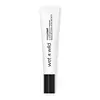What's inside
What's inside
 Key Ingredients
Key Ingredients

 Benefits
Benefits

 Concerns
Concerns

 Ingredients Side-by-side
Ingredients Side-by-side

Water
Skin ConditioningCyclopentasiloxane
EmollientIsododecane
EmollientVinyl Dimethicone/Methicone Silsesquioxane Crosspolymer
Polymethylsilsesquioxane
Trimethylsiloxysilicate
EmollientDimethicone
EmollientPhenyl Trimethicone
Skin ConditioningGlycerin
HumectantAlanine
MaskingArginine
MaskingGlycine
BufferingIsoleucine
Skin ConditioningHistidine
HumectantPhenylalanine
MaskingProline
Skin ConditioningThreonine
Serine
MaskingAspartic Acid
MaskingValine
MaskingSodium PCA
HumectantPanthenol
Skin ConditioningTocopheryl Acetate
AntioxidantAllantoin
Skin ConditioningSodium Lactate
BufferingPCA
HumectantXanthan Gum
EmulsifyingEthylhexylglycerin
Skin ConditioningHexyl Laurate
EmollientPolyglyceryl-4 Isostearate
EmulsifyingSodium Chloride
MaskingDimethicone/Vinyl Dimethicone Crosspolymer
Skin ConditioningTetrasodium EDTA
Triethoxycaprylylsilane
Cetyl PEG/PPG-10/1 Dimethicone
EmulsifyingPhenoxyethanol
PreservativeCI 77163
Cosmetic ColorantIron Oxides
CI 77891
Cosmetic ColorantWater, Cyclopentasiloxane, Isododecane, Vinyl Dimethicone/Methicone Silsesquioxane Crosspolymer, Polymethylsilsesquioxane, Trimethylsiloxysilicate, Dimethicone, Phenyl Trimethicone, Glycerin, Alanine, Arginine, Glycine, Isoleucine, Histidine, Phenylalanine, Proline, Threonine, Serine, Aspartic Acid, Valine, Sodium PCA, Panthenol, Tocopheryl Acetate, Allantoin, Sodium Lactate, PCA, Xanthan Gum, Ethylhexylglycerin, Hexyl Laurate, Polyglyceryl-4 Isostearate, Sodium Chloride, Dimethicone/Vinyl Dimethicone Crosspolymer, Tetrasodium EDTA, Triethoxycaprylylsilane, Cetyl PEG/PPG-10/1 Dimethicone, Phenoxyethanol, CI 77163, Iron Oxides, CI 77891
Isododecane
EmollientMicrocrystalline Wax
Emulsion StabilisingTrimethylsiloxysilicate
EmollientQuaternium-90 Bentonite
Neopentyl Glycol Diheptanoate
EmollientSilica
AbrasiveHydrogenated Styrene/Methylstyrene/Indene Copolymer
Propylene Carbonate
SolventDiisostearyl Malate
EmollientSorbitan Sesquioleate
EmulsifyingPhenoxyethanol
PreservativeTocopheryl Acetate
AntioxidantWater
Skin ConditioningTocopherol
AntioxidantQuartz
AbrasiveHelianthus Annuus Seed Oil
EmollientBisabolol
MaskingSilica Dimethyl Silylate
EmollientPassiflora Edulis Seed Oil
EmollientPentaerythrityl Tetra-Di-T-Butyl Hydroxyhydrocinnamate
AntioxidantArgania Spinosa Kernel Oil
EmollientMacadamia Ternifolia Seed Oil
EmollientCocos Nucifera Oil
Masking1,2-Hexanediol
Skin ConditioningGlycerin
HumectantPrunus Amygdalus Dulcis Oil
Skin ConditioningCaprylic/Capric Triglyceride
MaskingHydrogenated Lecithin
EmulsifyingGlucose
HumectantArginine
MaskingHydroxypropyl Methylcellulose
Emulsion StabilisingCitric Acid
BufferingCI 77220
Cosmetic ColorantAcetyl Glucosamine
Skin ConditioningAscorbic Acid
AntioxidantGlutathione
CI 77891
Cosmetic ColorantMica
Cosmetic ColorantIron Oxides
CI 77491
Cosmetic ColorantCI 77492
Cosmetic ColorantCI 77499
Cosmetic ColorantIsododecane, Microcrystalline Wax, Trimethylsiloxysilicate, Quaternium-90 Bentonite, Neopentyl Glycol Diheptanoate, Silica, Hydrogenated Styrene/Methylstyrene/Indene Copolymer, Propylene Carbonate, Diisostearyl Malate, Sorbitan Sesquioleate, Phenoxyethanol, Tocopheryl Acetate, Water, Tocopherol, Quartz, Helianthus Annuus Seed Oil, Bisabolol, Silica Dimethyl Silylate, Passiflora Edulis Seed Oil, Pentaerythrityl Tetra-Di-T-Butyl Hydroxyhydrocinnamate, Argania Spinosa Kernel Oil, Macadamia Ternifolia Seed Oil, Cocos Nucifera Oil, 1,2-Hexanediol, Glycerin, Prunus Amygdalus Dulcis Oil, Caprylic/Capric Triglyceride, Hydrogenated Lecithin, Glucose, Arginine, Hydroxypropyl Methylcellulose, Citric Acid, CI 77220, Acetyl Glucosamine, Ascorbic Acid, Glutathione, CI 77891, Mica, Iron Oxides, CI 77491, CI 77492, CI 77499
Ingredients Explained
These ingredients are found in both products.
Ingredients higher up in an ingredient list are typically present in a larger amount.
Arginine is an amino acid that is important for human development. Your body uses is it to produce hair keratin and skin collagen.
As a cosmetic ingredient, Arginine has antioxidant properties and can also help repair damaged skin. This ingredient is derived either synthetically or from animals.
Arginine isn't fungal acne safe when used in the presence of other lipids (fats, fatty acids, oils, esters, etc). Oils and fats occur naturally within the skin, so take caution when using Arginine if you're prone to fungal acne.
Learn more about ArginineCi 77891 is a white pigment from Titanium dioxide. It is naturally found in minerals such as rutile and ilmenite.
It's main function is to add a white color to cosmetics. It can also be mixed with other colors to create different shades.
Ci 77891 is commonly found in sunscreens due to its ability to block UV rays.
Learn more about CI 77891Glycerin is already naturally found in your skin. It helps moisturize and protect your skin.
A study from 2016 found glycerin to be more effective as a humectant than AHAs and hyaluronic acid.
As a humectant, it helps the skin stay hydrated by pulling moisture to your skin. The low molecular weight of glycerin allows it to pull moisture into the deeper layers of your skin.
Hydrated skin improves your skin barrier; Your skin barrier helps protect against irritants and bacteria.
Glycerin has also been found to have antimicrobial and antiviral properties. Due to these properties, glycerin is often used in wound and burn treatments.
In cosmetics, glycerin is usually derived from plants such as soybean or palm. However, it can also be sourced from animals, such as tallow or animal fat.
This ingredient is organic, colorless, odorless, and non-toxic.
Glycerin is the name for this ingredient in American English. British English uses Glycerol/Glycerine.
Learn more about GlycerinIsododecane is a fragrance, emollient, and solvent.
As an emollient, it helps your skin stay soft and hydrated. Emollients help trap moisture into your skin.
Isododecane's role as a solvent makes it a great texture enhancer. It spreads smoothly on skin and does not leave a sticky feeling behind. Isododecane also helps prevent color transfer in makeup products.
Isododecane is not absorbed into skin.
Learn more about IsododecanePhenoxyethanol is a preservative that has germicide, antimicrobial, and aromatic properties. Studies show that phenoxyethanol can prevent microbial growth. By itself, it has a scent that is similar to that of a rose.
It's often used in formulations along with Caprylyl Glycol to preserve the shelf life of products.
Tocopheryl Acetate is AKA Vitamin E. It is an antioxidant and protects your skin from free radicals. Free radicals damage the skin by breaking down collagen.
One study found using Tocopheryl Acetate with Vitamin C decreased the number of sunburned cells.
Tocopheryl Acetate is commonly found in both skincare and dietary supplements.
Learn more about Tocopheryl AcetateThis silicone is an emollient. Emollients create a thin film on the skin to prevent moisture from escaping.
It is not soluble in water and helps increase water-resistance in products.
According to a manufacturer, it can blend seamlessly with silicone oils, such as Cyclopentasiloxane.
Learn more about TrimethylsiloxysilicateWater. It's the most common cosmetic ingredient of all. You'll usually see it at the top of ingredient lists, meaning that it makes up the largest part of the product.
So why is it so popular? Water most often acts as a solvent - this means that it helps dissolve other ingredients into the formulation.
You'll also recognize water as that liquid we all need to stay alive. If you see this, drink a glass of water. Stay hydrated!
Learn more about WaterThis ingredient is a combination of red, black, and yellow iron oxide pigments. This combination of colors is usually found in foundation, because it results in a "skin" color.